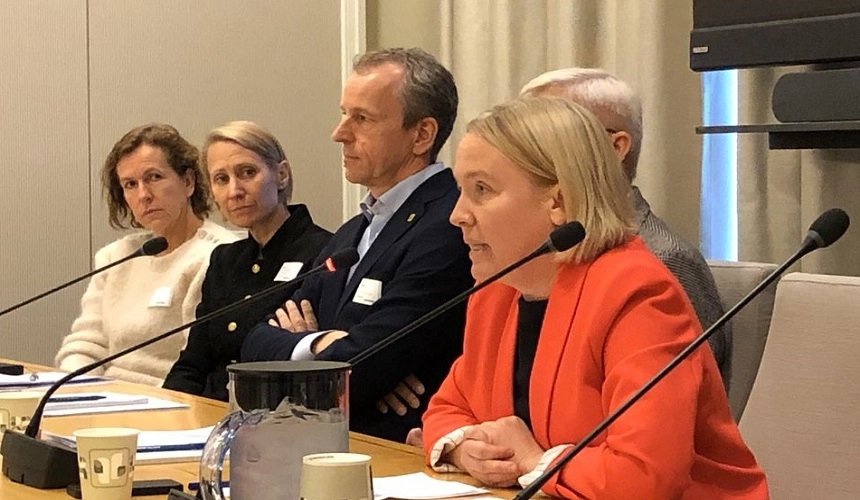In a hearing before the finance committee, Unni Bergé, Head of Communication and Public Relations at the Norwegian EV Association (Norsk elbilforening), expressed her discontent with the government’s proposal to reduce the amount of motor insurance for vehicles running on fossil fuels.
“Instead of taking the adequate measures, the government messes it up,” Berge told the finance committee.
“The government proposes to give tax reductions in the traffic insurance fee, but only if the car pollutes,” she added.
Om ett år og to måneder skal alle nye biler være elektriske.
— Norsk elbilforening (Norwegian EV Association) (@Elbilforeningen) October 17, 2023
"I stedet for å ta tilstrekkelige grep, roter regjeringen det til", sa @UnniBerge fra #norskelbilforening på høring hos finanskomiteen #stortinget i dag.https://t.co/FyvZpsbe5K #statsbudsjett #stortinget
While 83 percent of all new cars sold in Norway in 2023 are electric, in some markets, such as vans and rental cars, the percentage of electric vehicles (EVs) is considerably lower.
In this regard, although the Storting’s (Norwegian Parliament) goal is for all new cars and light vans to be emission-free by 2025, the current proportion of these vehicles remains far from the short-term target.
It’s the case that most individuals choose electric cars, but diesel continues to be the chosen technology for vans. In fact, so far this year, only 33 percent opted for zero emissions units.

To learn more details about the situation, Mobility Portal Europe contacted Helene Busengdal, Project Coordinator and Advisor at Norsk elbilforening.
“To reach 100 percent by 2025, we need to make some adjustments to the tax system to ensure that EVs are the preferred choice in all markets,” Busengdal comments.
Moreover, it is worth noting that some taxes and fees related to electromobility were introduced last year.
However, Busengdal acknowledges that the Norwegian car tax system is still designed to make it more economically beneficial to choose an electric vehicle over a polluting one.
“It should stay that way until EVs have outcompeted ICE (internal combustion engine) units in the new car market,” she explains.
In addition to effective policies that make electric cars an attractive choice for consumers, another crucial aspect of achieving 100 percent zero-emission vehicles by 2025 is “ensuring a viable infrastructure for drivers.”
“This should always be a priority,” Busengdal states.
While the number of charging points in the country is high, it is necessary to continue building new stations as the number of electric cars increases.
It’s worth noting that in Norway, the market has had to be regulated to ensure consumer-friendly solutions, especially regarding the wide array of existing payment methods.
“We also highlight that better and closer cooperation between charging companies, local authorities, and electricity companies is important,” Busengdal recognizes.
Additional taxes on electric cars in Norway?
By 2030, the municipality of Oslo must reduce greenhouse gas emissions by 95 percent.
However, the removal of incentives in the zero-emission vehicle policy could potentially delay this goal.
A new report from the Institute of Transport Economics (TØI) indicates that “fiscal changes that make owning and using an electric car less profitable will mean that emissions in Oslo will not decrease as rapidly as previously assumed.”
According to the researchers, the full VAT on EVs and higher toll charges have a negative impact on the possibility of achieving climate goals.
Currently, drivers in Oslo pay approximately 50 percent of the regular toll fee.
But if the full fee is introduced, it is projected that emissions will increase by a stand-alone 29 percent by 2030.
As for the VAT, it is currently applied to the purchase amount exceeding 500,000 NOK.
If politicians introduce the full VAT for electric cars, emissions in Oslo could increase by a stand-alone 25 percent by 2030.
Read more: What countries led electric vehicle sales in September?








